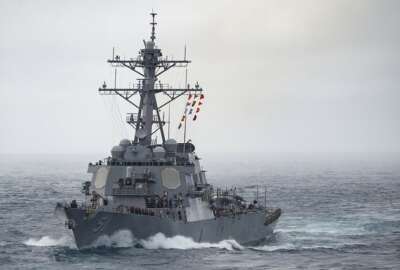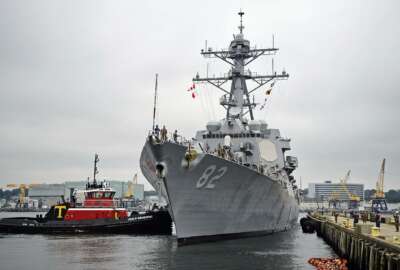
GDIT protests Navy’s $7.7 billion NGEN-R contract
General Dynamics Information Technology, one of the two losing bidders for the largest portion of the NGEN contract, has filed a protest with the Government...
General Dynamics Information Technology has decided to lodge a legal challenge against the Navy’s latest Next Generation Enterprise Network contract, one of the largest IT awards in the federal government’s history.
GDIT filed its bid protest with the Government Accountability Office on Wednesday, GAO records show. A company spokesman did not immediately respond to a request for comment on what aspects of the award the company is challenging.
The Navy awarded the $7.7 billion NGEN Service Management, Integration and Transport contract to Leidos on Feb. 5. That award — the larger of the two in a years-long competition of the NGEN contract structure — is meant to deliver the core backbone of the Navy-Marine Corps Intranet (NMCI), including cybersecurity services, network operations, service desk and data transport.
Under the new contract structure, the Navy also intends to consolidate its separate ONE-Net into NMCI. GDIT is the incumbent vendor for ONE-Net, which currently handles Navy IT services in ten countries outside the continental United States.
The Navy awarded the smaller portion of the NGEN recompetition to HP last October. That separate award, worth up to $1.4 billion, calls for the company to provide laptops, desktops and other computing devices as a service.
Perspecta is the incumbent for the current NGEN contract. That company has not yet indicated whether it intends to file its own challenge.
A Navy spokesman declined to comment on the GDIT protest.
But in an interview with Federal News Network earlier this week, Capt. Ben McNeal, the program manager for naval enterprise networks, emphasized that the Navy Department sees a strong need to consolidate the management of its networks under the new contract — and not just NMCI and ONE-Net.
“The DON CIO really has this concept of a single logical network that supports the Navy and Marine Corps, afloat and ashore, and all of our communities of interest,” McNeal said. “This concept of domain singularity is a lofty goal, but starting with the Navy, we know that there are 140-some-odd legacy excepted networks outside of our primary enterprise networks. It’s become really unaffordable, a large security burden, and there’s a need for all of those networks to transform to some degree in order to be able to consume cloud services.”
The recompetition of the NGEN contract has already been delayed several times, and the latest protest is likely to set work back even further.
Under GAO’s protest rules, the office has 100 days to rule on whether to sustain, deny or dismiss the protest. The Navy’s response is due within the next 30 days.
Copyright © 2025 Federal News Network. All rights reserved. This website is not intended for users located within the European Economic Area.
Jared Serbu is deputy editor of Federal News Network and reports on the Defense Department’s contracting, legislative, workforce and IT issues.
Follow @jserbuWFED





